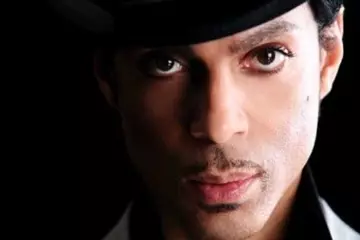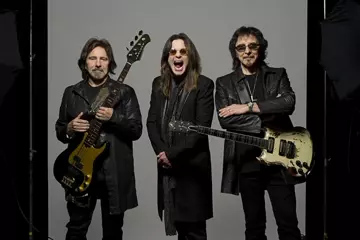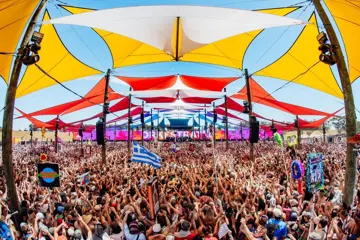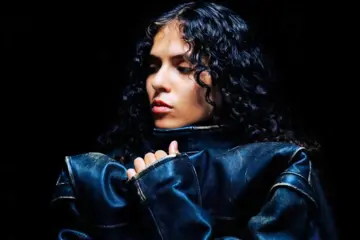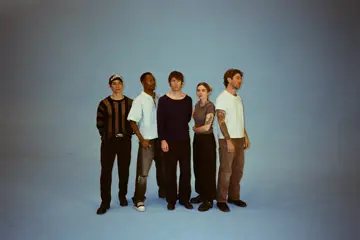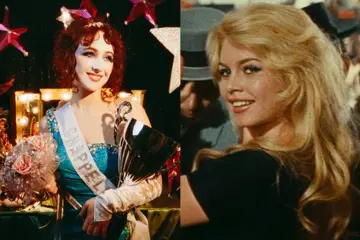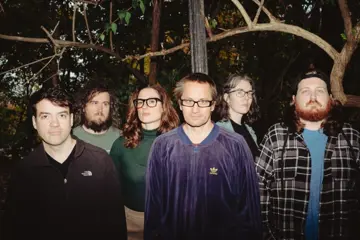Perhaps more than any other art form, dance is fractured along the fault line between the traditional and the new. This friction is particularly obvious in ballet, where the saccharine stories and by rote steps of the most ubiquitous narrative works can seem sterile and twee next to the sleek-edged invention of an abstract aesthetic. Discovering a vernacular of movement that can somehow marry the traditions of ballet with the innovations of a more contemporary approach requires a particular set of insights. Drawing on a confident sense of creative bravery, dramatic intellect, historical sensitivity, and perhaps most crucially, the objectivity to balance these competing demands, it’s a rare artist who possesses the necessary combination of skills. And if his brawny, blood-soaked Spartacus is any measure, Australian choreographer Lucas Jervies is one such rarity.
“I am Spartacus,” is the rallying cry of the gladiatorial rebellion, made famous in Stanley Kubrick’s 1960 film iteration, starring a barrel-chested, nappy-clad Kirk Douglas. Jervies, however, is concerned with another statement: who is Spartacus? The answer to this question begins and ends with the muscular virtuosity of Principal Artist Kevin Jackson. Bulked up substantially for the role, Jackson’s Spartacus is all power and possibility; a physicality that defies ballet’s soft and supple stereotypes without losing a fraction of this dancer’s boundless capabilities. It’s a performance that elevates this character far beyond the obvious Roman tropes, no longer merely a gladiatorial rabble-rouser but a man, complete with all the emotional complexities that suggests: yearning, furious, flawed and conflicted, steeled by love and an impossible hope for freedom he ultimately knows is futile.
It’s evident throughout that Jervies has crafted this role to make full use of every sinew of Jackson’s body, lavishing the audience with all the technical pyrotechnics you'd expect, but also revealing new facets. Moments of imposing strength and brutality are counterpointed by great tenderness, courtesy of the reflexive lyricism that is a hallmark of Jackson’s dance. And yet, in this strangely chimerical context, punctuated by unexpected shifts in gear and intention, it’s almost like watching this artist for the first time. It’s an extraordinarily deft mode of dance-making; uncompromising, theatrically rigourous, yet responsive and mercurial, transporting the form both towards and away from its classical roots.
And it’s not just Jackson who impresses. As Spartacus’ stolen love Flavia, Robyn Hendricks channels a similarly complex characterisation. Unbowed and defiant even as she is being dehumanised, she lofts this role from that of a passive damsel in distress to that of an active member of the uprising. This equal footing is most powerfully harnessed in the third act’s astonishing pas de deux. This love duet is etched with almost superhuman assurance, effortless and yet breathtaking, evoking the depths of the anguish that threatens to tear them apart and the hope of a shared future that cannot be.
Don't miss a beat with our FREE daily newsletter
Jervies conjures a dark reflection of his two central heroes in the roles of the tyrannical autocrat Crassus and his serpentine wife Tertulla. Using an entirely different vocabulary of movement, these two villains – danced superbly on opening night by Ty King-Wall and the company’s newest Principal Amy Harris – exist in an almost identically opposite power dynamic. Tertulla's subservience and sexual obedience pivots from Crassus' arrogance and his gaudy, puffed-up entitlement. Jerome Kaplan’s opulent costuming brings a frisson of contemporary relevance into play, making a discreet nod to the Western world’s dispossession of those on the fringes of modern society and the innate cruelties of privilege.
There have, of course, been other settings of Spartacus, most notably those of the Cold War era Soviet Union, such as Grigorovich's highly formalised, technically conservative 1968 version, a work that remains in the rep of the Bolshoi half a century on. Interestingly by contrast, one of the greatest strengths of Jervies' setting is its use of undanced theatre. The success of these influences is in no small part due to the collaborators who have contributed to the production, including director and dramaturg Imara Savage and fight director Nigel Poulton. This dramatic integrity offers a refreshing emotional and physical richness, as well as a welcome element of gritty realism, particularly in the white-knuckle fight sequences that quite literally pull no punches.
Jervies and his collaborators offer expressive detail in spades, but they are also capable of grand statements, the most striking of which comes in this production’s devastating final tableaux. Displayed on plinths like blood-drenched statues, Spartacus and the other victims of the revolt stand as monuments and martyrs, preserved for the ages but at the cost of their humanity. It's impossible not to feel the spectre of contemporary geopolitics looming, but any reference to the resurgence of fascism and the movements that have emerged to resist it is made with a lightness of touch that stops the artistry of this production being eclipsed by a didactic subtext.
However, while this show boasts plenty of visual confidence and theatrical savvy, this vision is not always supported by Khachaturian’s dated score. Jervies, in favouring the dramatic momentum of a scene over arbitrary musicality, stumbles into moments where the score and the movement operate on entirely detached emotional wavelengths. This isn’t to say that the business of choreography should simply be a matter of physically manifesting musical gestures. But it does beg the question, what could Jervies and Co achieve with a newly composed, dramatically tailored score at their disposal? Something revolutionary, I'm quite certain.
The Australian Ballet presents Spartacus, until 29 Sep at Arts Centre Melbourne and from 9 Nov at the Sydney Opera House.



